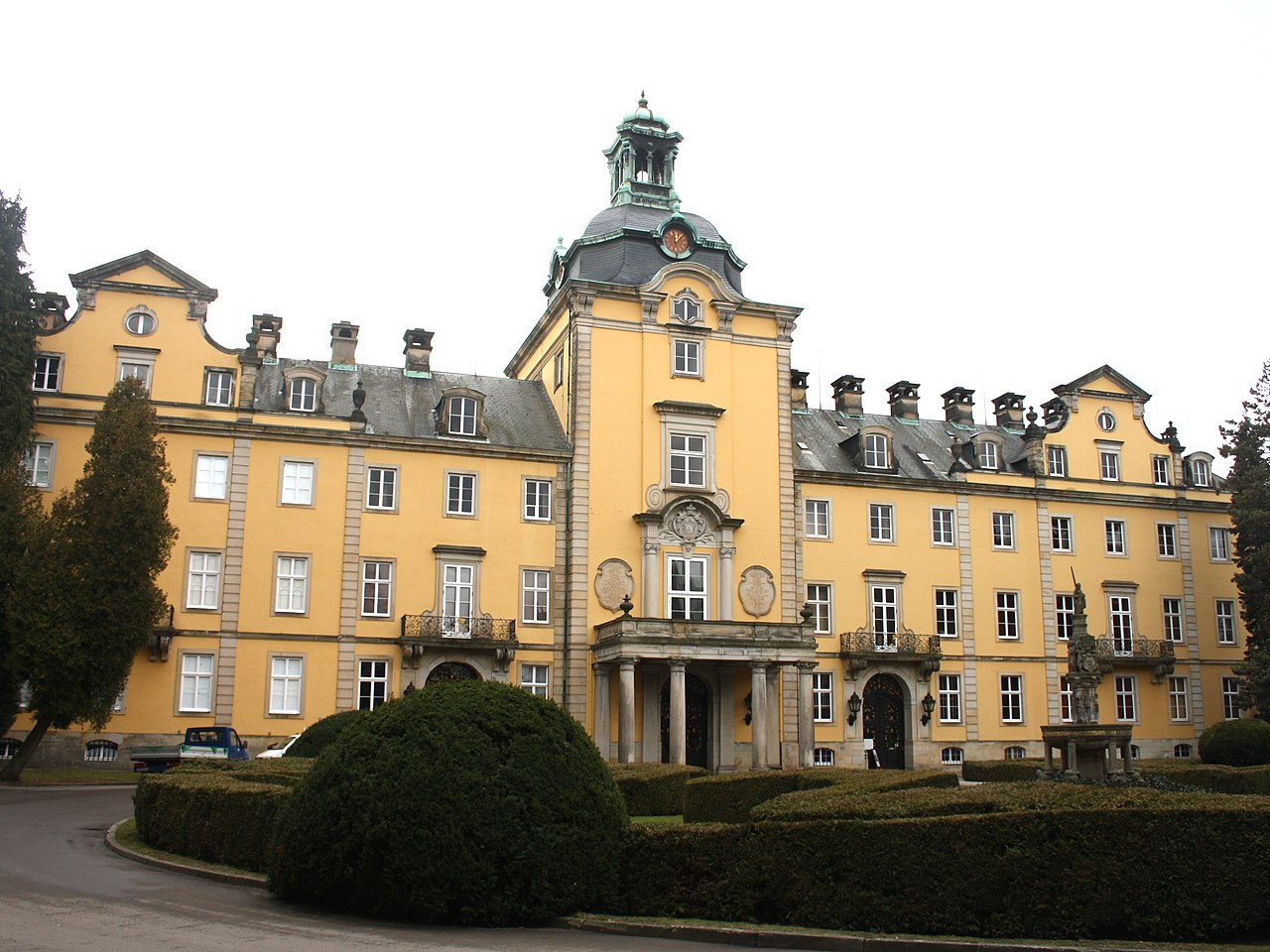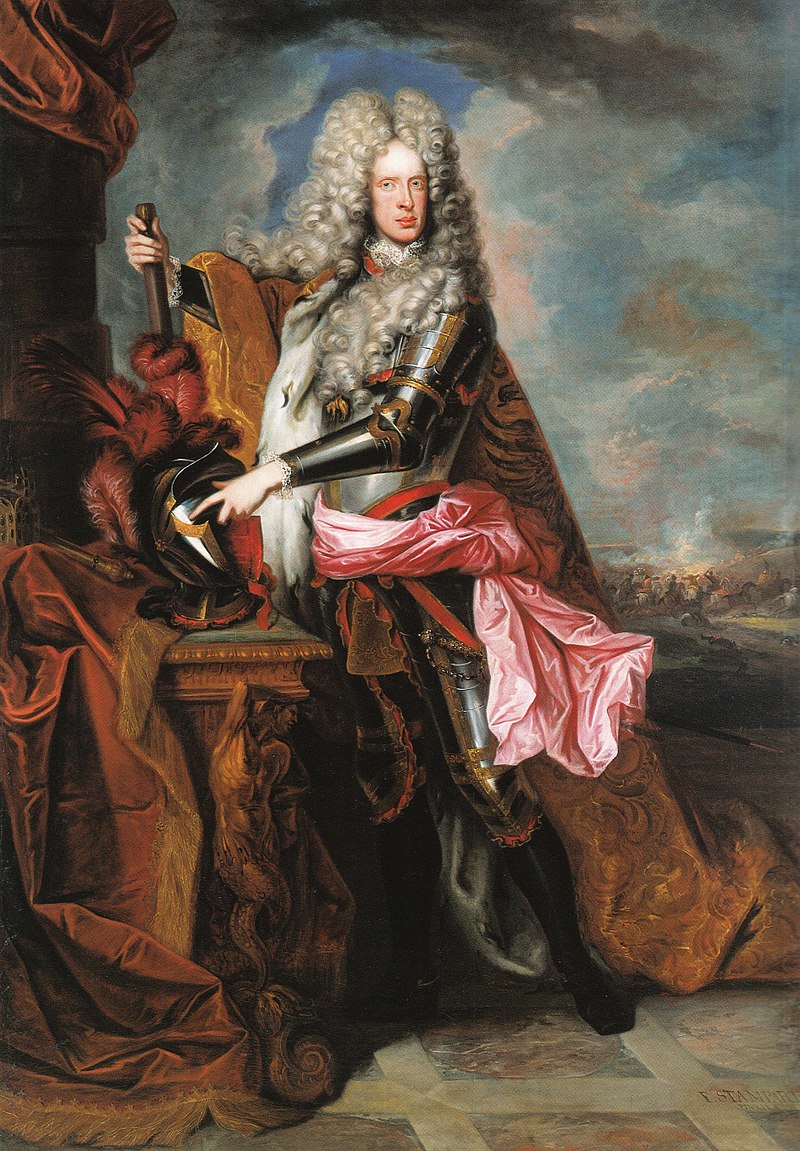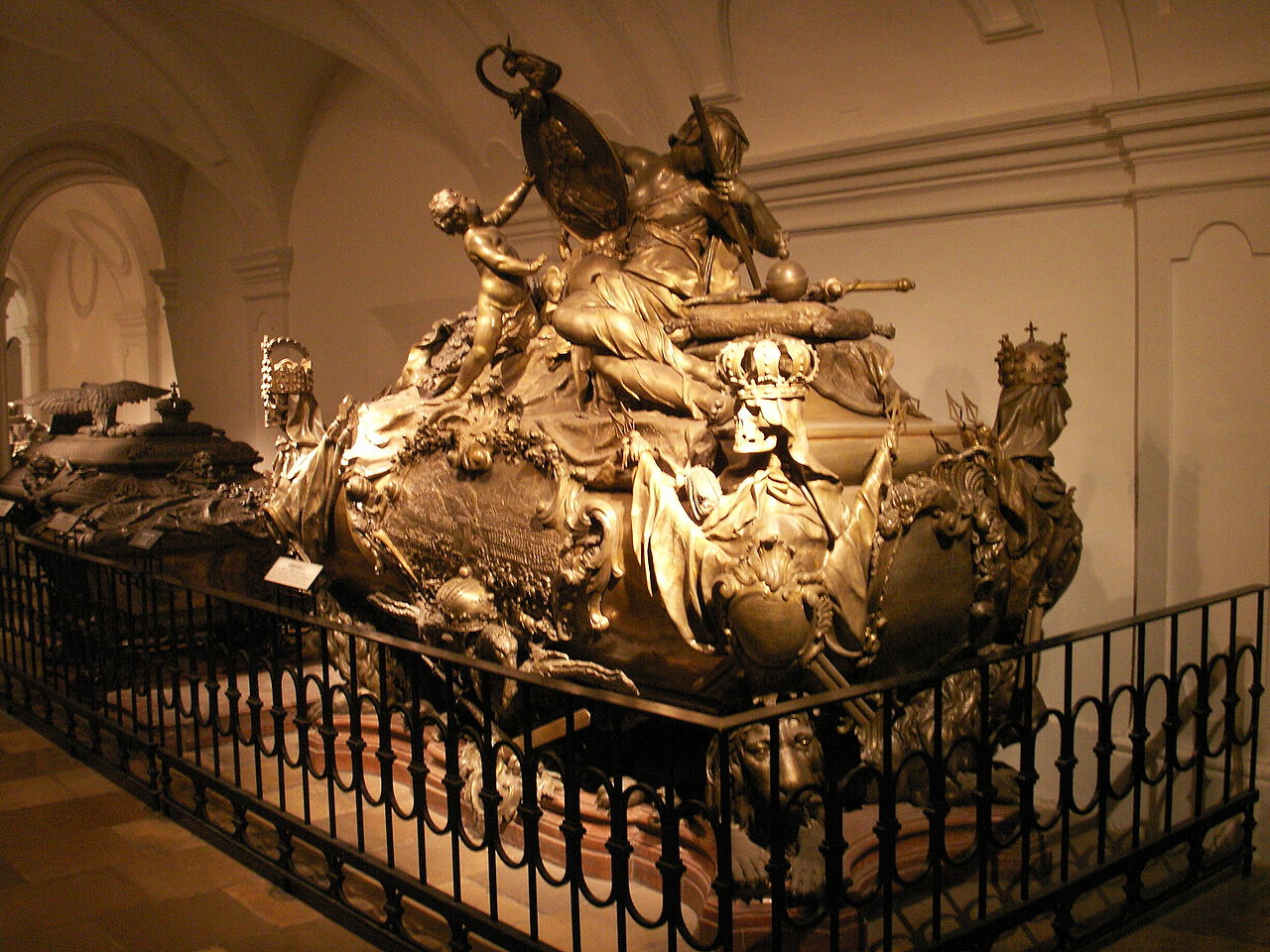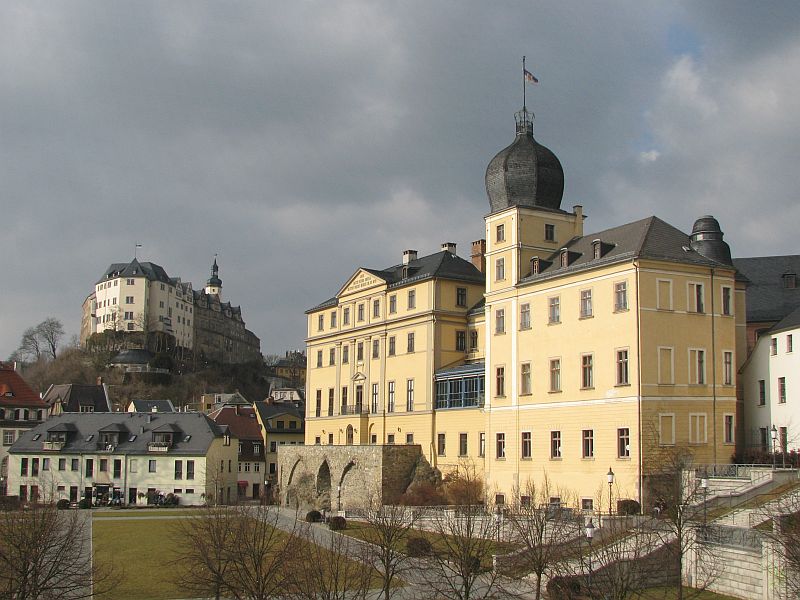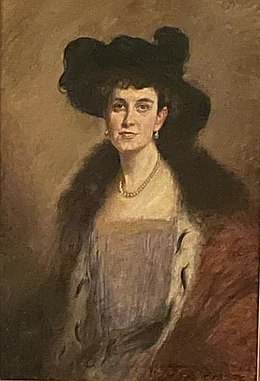by Susan Flantzer
© Unofficial Royalty 2023

Elisabeth Christine of Brunswick-Wolfenbüttel, Holy Roman Empress; Credit – Wikipedia
The Holy Roman Empire was a limited elective monarchy composed of hundreds of kingdoms, principalities, duchies, counties, prince-bishoprics, and Free Imperial Cities in central Europe. The Holy Roman Empire was not really holy since, after Holy Roman Emperor Charles V in 1530, no emperors were crowned by the pope or a bishop. It was not Roman but rather German because it was mainly in the regions of present-day Germany and Austria. It was an empire in name only – the territories it covered were mostly independent each with its own rulers. The Holy Roman Emperor directly ruled over only his family territories, and could not issue decrees and rule autonomously over the Holy Roman Empire. A Holy Roman Emperor was only as strong as his army and alliances, including marriage alliances, made him. His power was severely restricted by the many sovereigns of the constituent monarchies of the Holy Roman Empire. From the 13th century, prince-electors, or electors for short, elected the Holy Roman Emperor from among the sovereigns of the constituent states.
Frequently but not always, it was common practice to elect the deceased Holy Roman Emperor’s heir. The Holy Roman Empire was an elective monarchy. No person had a legal right to the succession simply because he was related to the current Holy Roman Emperor. However, the Holy Roman Emperor could and often did, while still alive, have a relative (usually a son) elected to succeed him after his death. This elected heir apparent used the title King of the Romans.
Learn more at Unofficial Royalty: What was the Holy Roman Empire?
********************
Elisabeth Christine of Brunswick-Wolfenbüttel was the wife of Karl VI, Holy Roman Emperor, King of Hungary, King of Croatia, King of Bohemia, Archduke of Austria, who also held several other titles. Born on August 28, 1691, in Brunswick, then located in the Duchy of Brunswick-Lüneburg, now in the German state of Lower Saxony, Elisabeth Christine was the eldest of the four children, all daughters, of Ludwig Rudolf, Duke of Brunswick-Wolfenbüttel and Princess Christine Luise of Oettingen-Oettingen. Her paternal grandparents were Anton Ulrich, Prince of Brunswick-Wolfenbüttel and Princess Elisabeth Juliane of Schleswig-Holstein-Sonderburg-Norburg. Elisabeth Christine’s maternal grandparents were Albrecht Ernst I, Prince of Oettingen-Oettingen (link in German) and Duchess Christine Friederike of Württemberg (link in German).
Elisabeth Christine had three younger sisters but only two survived childhood:

Elisabeth Christine’s sister Charlotte Christine; Credit – Wikipedia
The two surviving sisters of Elisabeth Christine have interesting backgrounds. Because Elisabeth Christine was married to Holy Roman Emperor Karl VI, Peter I (the Great) Emperor of All Russia thought her sister Charlotte Christine would be a good match for his son and heir Alexei Petrovich, Tsarevich of Russia. In 1711, 17-year-old Charlotte Christine married 21-year-old Alexei with the expectation that one day, Alexei Petrovich would be Emperor of All Russia and she would be Empress of All Russia. Charlotte Christine and Alexei Petrovich had one daughter Grand Duchess Natalia Alexeievna and one son Peter II, Emperor of All Russia. After giving birth to her son, Charlotte Christine felt well until the third day after the birth when abdominal pain, fever, and delirium developed. Eleven days after her son’s birth 21-year-old Charlotte Christine died from puerperal fever (childbed fever). Alexei Petrovich, Tsarevich of Russia never became Emperor of All Russia because he predeceased his father. Peter II, the son of Charlotte Christine and Alexei did succeed to the Russian throne but reigned for less than three years, dying of smallpox at age 14. His sister Grand Duchess Natalia Alexeievna had died a few years earlier from tuberculosis, also at age 14.

Elisabeth Christine’s sister Antoinette Amalie; Credit – Wikipedia
Because Elisabeth Christine’s father Ludwig Rudolf, Duke of Brunswick-Wolfenbüttel had no sons, his first cousin Prince Ferdinand Albrecht of Brunswick-Wolfenbüttel-Bevern was his heir. In 1712, Elizabeth Christine’s 16-year-old sister Antoinette Amalie married her 32-year-old first cousin once removed Prince Ferdinand Albrecht of Brunswick-Wolfenbüttel-Bevern. In 1735, when his first cousin and father-in-law died, Ferdinand Albrecht succeeded him as Duke of Brunswick-Wolfenbüttel. Antoinette Amalie and Ferdinand Albrecht had fifteen children. Their eldest son Anton Ulrich of Brunswick-Lüneburg married Elisabeth of Mecklenburg-Schwerin. Elisabeth, also known as Grand Duchess Anna Leopoldovna of Russia, the daughter of Grand Duchess Ekaterina Ivanovna of Russia, the eldest of the three surviving daughters of the five daughters of Ivan V, Tsar of All Russia. Because of a succession issue, Elisabeth had a claim to the Russian throne. In 1740, the two-month-old son of Anton Ulrich and Elisabeth succeeded to the Russian throne as Ivan VI, Emperor of All Russia. The story of Ivan VI and his family is one of the most tragic stories in royal history. A little more than a year after succeeding to the Russian throne, Ivan VI was deposed and spent the next 23 years imprisoned before being murdered during the reign of Catherine II (the Great), Empress of All Russia. Ivan VI’s parents Anton Ulrich and Elisabeth spent the rest of their lives imprisoned and except for his sister Catherine, all Ivan’s other siblings were born while their parents were imprisoned. Ivan’s siblings remained imprisoned until 1780. Read more at Unofficial Royalty: Ivan VI, Emperor of All Russia.
Among the other children of Antoinette Amalie and Ferdinand Albrecht were Elisabeth Christine who married Friedrich II (the Great), King of Prussia; Sophie Antoinette who married Ernst Friedrich, Duke of Saxe-Coburg-Saalfeld, the great-grandparents of Queen Victoria of the United Kingdom and her husband Prince Albert of Saxe-Coburg and Gotha; and Juliana Maria who married Frederik V, King of Denmark.

Arrival of Elisabeth Christine in Spain to marry Karl, then Archduke of Austria; Credit – Wikipedia
Before Holy Roman Emperor Leopold I died in 1705, and his elder son succeeded him as Joseph II, he arranged a marriage for his younger son Karl with Elisabeth Christine. However, the Lutheran Elisabeth Christine initially opposed the marriage because she would have to convert to Roman Catholicism. She finally gave in and was tutored in Roman Catholicism by her future mother-in-law Empress Eleonore Magdalene. Elisabeth Christine officially converted to Roman Catholicism in 1707. At the time of the wedding, Karl was fighting for his ultimately unsuccessful claim to the Spanish throne against the French candidate Philippe of France, Duke of Anjou, later Felipe V, the first Bourbon King of Spain, so he was living in Barcelona, Spain. Elisabeth Christine traveled to Barcelona in July 1708 and the couple was married on August 1, 1708, at the Church of Santa María del Mar in Barcelona, Spain.

Elisabeth Christine with her husband Karl and their three daughters in 1730; Credit – Wikipedia
Elisabeth Christine and Karl had one son who died in infancy and three daughters, with one dying in childhood:
- Archduke Leopold Johann of Austria (born and died 1716), died in infancy
- Maria Theresa of Austria, in her own right Archduchess of Austria, and Queen of Hungary, Croatia, and Bohemia (1717 – 1780), heir to the Habsburg hereditary lands, married François III Étienne, Duke of Lorraine (reigned 1729 – 1737), also Francesco II Stefano, Grand Duke of Tuscany (reigned 1737 – 1765), and Franz I, Holy Roman Emperor (reigned 1745 – 1765), had sixteen children including Holy Roman Emperor Joseph II, Holy Roman Emperor Leopold II, and Archduchess Maria Antonia of Austria, better known as Queen Marie Antoinette of France
- Archduchess Maria Anna of Austria, Governor of the Austrian Netherlands (1718 – 1744), married Prince Charles Alexander of Lorraine, Maria Anna died in childbirth along with her first child, a stillborn daughter
- Archduchess Maria Amalia of Austria (1724 – 1730), died in childhood
The reign of Joseph I, Holy Roman Emperor lasted just six years. During the smallpox epidemic of 1711, which killed Louis, Le Grand Dauphin of France, the only surviving child and heir of King Louis XIV of France, Joseph also became ill with smallpox. He died, aged thirty-two, on April 17, 1711. Because Joseph had no sons, his brother Karl automatically succeeded to the Habsburg hereditary lands and was elected Karl VI, Holy Roman Emperor. Elisabeth Christine was Holy Roman Empress and held the female counterpart of all Karl’s other titles.

Elisabeth Christine and her husband Karl V (in the middle) at the wedding breakfast of their daughter Maria Theresa and her husband Francis Stephen (on the right); Credit – Wikipedia
The fact that Karl VI did not have a male heir caused problems. Joseph I and Karl VI’s father Leopold I had devised the Mutual Pact of Succession, a succession device that stated the daughters of Joseph I, the elder brother, would have absolute precedence over the daughters of Karl VI, the younger brother, and the eldest daughter of Joseph I, Archduchess Maria Josepha of Austria, would ascend to the thrones of all the Habsburg hereditary lands. However, Karl decided to amend the Mutual Pact of Succession. Karl VI’s Pragmatic Sanction of 1713 annulled the terms of the Mutual Pact of Succession and made his future daughters (his elder daughter Maria Theresa was not born until 1717) the heirs to the Habsburg hereditary lands instead of his niece Archduchess Maria Josepha.
Even though the Pragmatic Sanction allowed a daughter of Karl VI to succeed in the Habsburg hereditary lands, Elisabeth Christine’s life was dominated by the pressure upon her to give birth to a male heir. After the death of her seven-month-old son in 1716, she found her situation very stressful. Her physical and mental health was ruined by the now ridiculous methods to make her conceive another son – if only it was known at the time that it was the male who determined the gender. Elisabeth Christine was given large doses of liquor to make her more fertile. During her last pregnancy, her bed-chamber was decorated with erotic images of male beauty to make her expected baby a male by stimulating her fantasy. Then the the court doctors prescribed a a calorie-laden diet to increase her fertility. Elisabeth Christine gained so much weight that she was unable to walk, had breathing problems and insomnia, and had to be lowered into her chairs by a specially constructed machine.
Elisabeth Christine got along very well with her mother-in-law Eleonore and her sister-in-law and widow of Joseph I, Wilhelmine Amalie. The three empresses were supportive of each other. Wilhelmine Amalie nursed Elisabeth Christine when she had smallpox, and Elisabeth Christine nursed Eleonore during her last illness. Elisabeth Christine was not outwardly involved in politics but stayed in the background, and had some influence. However, she was instrumental in arranging the marriages of her niece and nephew, the children of her sister Antoinette Amalie: Elisabeth Christine to the future Friedrich II (the Great), King of Prussia and Anton Ulrich and Elisabeth of Mecklenburg-Schwerin (also known as Grand Duchess Anna Leopoldovna).
On October 20, 1740, at the age of 55, Karl VI, Holy Roman Emperor died at the Palais Augarten in Vienna, Austria, after a ten-day illness. Ten days earlier, Karl had eaten large amounts of a mushroom dish. The following day, he developed severe nausea, vomiting, and episodes of unconsciousness. After a few days of feeling fine, the symptoms returned, accompanied by a high fever, and eventually led to his death. The symptoms are typical of death cap mushroom poisoning but the definitive cause of Karl’s death remains unknown. Karl was interred in the Imperial Crypt at the Capuchin Church in Vienna.

Elisabeth Christine in her later years; Credit – Wikipedia
After Karl’s death, his daughter Maria Theresa succeeded to the Habsburg hereditary lands as the Queen of Hungary, Queen of Croatia, Queen of Bohemia, Archduchess of Austria in her own right, the only female to hold those sovereign positions. This led to led to the War of Austrian Succession (1740 – 1748) resulting in the eventual confirmation of Maria Theresa’s Habsburg titles. However, Maria Theresa was unable to become the sovereign of the Holy Roman Empire because she was female, and so Karl Albrecht, Duke of Bavaria and Prince-Elector of Bavaria, the husband of Maria Theresa’s first cousin Maria Amalia of Austria, the younger daughter of Joseph I, Holy Roman Emperor, was elected Holy Roman Emperor. He was a member of the House of Wittelsbach, and his reign as Holy Roman Emperor marked the end of three centuries of uninterrupted Habsburg imperial rule. After Karl Albrecht died in 1745, Maria Theresa, via a treaty, arranged for her husband Francis Stephen, Duke of Lorraine to be elected Holy Roman Emperor, as Franz I. Despite the snub, Maria Theresa wielded the real power.

Tomb of Elisabeth Christine; Credit – By DALIBRI – Own work, CC BY-SA 3.0, https://commons.wikimedia.org/w/index.php?curid=21030087
Like her father, Maria Theresa did not allow her mother Elisabeth Christine to be involved in politics. Maria Theresa had Hetzendorf Palace, very close to the summer residence Schönbrunn Palace, expanded as a widow’s residence for her mother. Elisabeth Christine survived her husband by ten years, dying, aged 59, in Vienna, Austria, on December 21, 1750. She was interred in the Imperial Crypt at the Capuchin Church in Vienna.
This article is the intellectual property of Unofficial Royalty and is NOT TO BE COPIED, EDITED, OR POSTED IN ANY FORM ON ANOTHER WEBSITE under any circumstances. It is permissible to use a link that directs to Unofficial Royalty.
Works Cited
- Elisabeth Christine von Braunschweig-Wolfenbüttel (2023) Wikipedia (German). Available at: https://de.wikipedia.org/wiki/Elisabeth_Christine_von_Braunschweig-Wolfenb%C3%BCttel (Accessed: 27 August 2023).
- Elisabeth Christine of Brunswick-Wolfenbüttel (2023) Wikipedia. Available at: https://en.wikipedia.org/wiki/Elisabeth_Christine_of_Brunswick-Wolfenb%C3%BCttel (Accessed: 27 August 2023).
- Flantzer, Susan. (2023) Karl VI, Holy Roman Emperor, King of Hungary, King of Croatia, King of Bohemia, Archduke of Austria, Unofficial Royalty. Available at: https://www.unofficialroyalty.com/karl-vi-holy-roman-emperor-king-of-hungary-king-of-croatia-king-of-bohemia-archduke-of-austria/ (Accessed: 27 August 2023).
- Louis Rudolph, Duke of Brunswick (2023) Wikipedia. Available at: https://en.wikipedia.org/wiki/Louis_Rudolph,_Duke_of_Brunswick (Accessed: 27 August 2023).
- Wheatcroft, Andrew. (1995) The Habsburgs. London: Viking.
- Wilson, Peter H. (2016) Heart of Europe – A History of the Holy Roman Empire. Cambridge, MA: Harvard University Press.





























